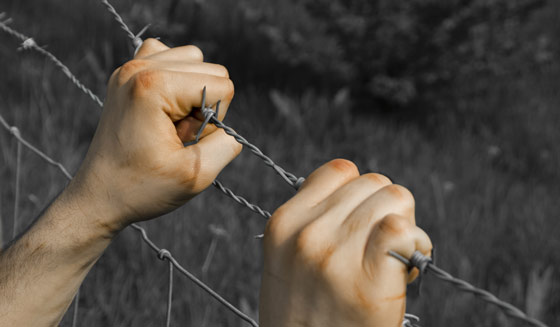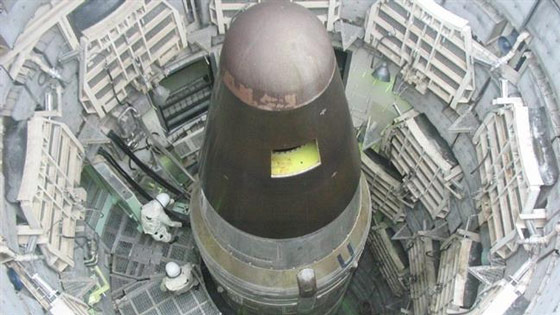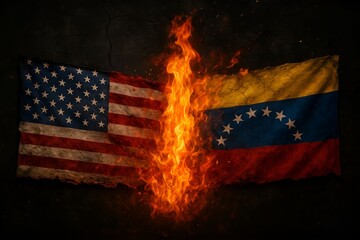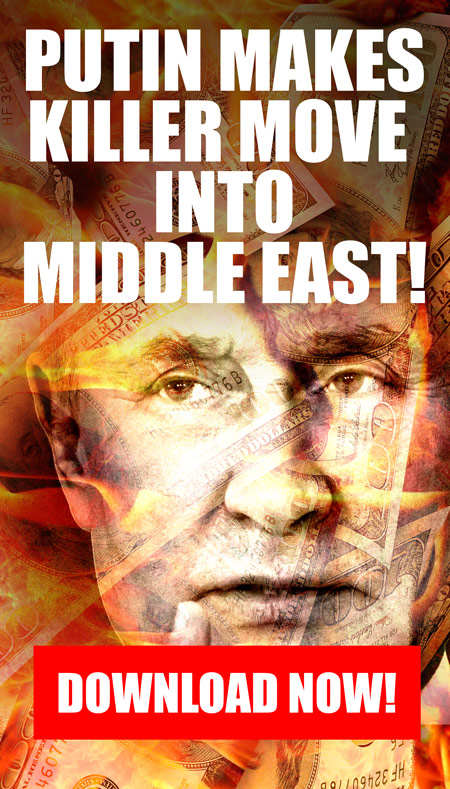This article was originally published by Richard M. Ebeling at The American Institute for Economic Research.

This August marks the 30th anniversary of the beginning of the end of the Soviet Union. During August 19-21, 1991, hardline members of the Soviet Communist Party and the KGB attempted a coup d’état in Moscow to prevent the political and economic reforms introduced over the prior five years from going any further. The coup failed, and on Christmas Eve, 1991, the Soviet Union was dissolved and disappeared from the political map of the world.
The events of those days are especially imprinted on my mind because I was in Moscow at the time, watching and, indeed, even participating in those August 1991 events. Frequently traveling to the Soviet Union on privatization and market reform consulting work, especially in the, now, former Soviet republic of Lithuania and in Moscow, I witnessed the failed coup attempt and its immediate aftermath.
The Soviet regime had ruled Russia and the other 14 component republics of the U.S.S.R. for nearly 75 years, since the Bolshevik Revolution in November 1917 led by Vladimir Lenin and his communist cadre of Marxist followers. During that almost three-quarters of a century, first under Lenin and especially Joseph Stalin and then their successors, historians have estimated that upwards of 64 million people – innocent, unarmed men, women, and children – died at the hands of the Soviet regime in the name of building the “bright, beautiful future” of socialism.
Mass Murder and Slave Labor Under Soviet Socialism
The forced collectivization of the land under Stalin in the early 1930s, alone, is calculated to have cost the lives of nine to twelve million Russian and Ukrainian peasants and their families who resisted the loss of their private farms and being forced into state collective farms that replaced them. Some were simply shot; others were tortured to death or sent to die as slave laborers in the concentration and labor camps in Siberia or Soviet Central Asia known as the GULAG. Millions were slowly starved to death by a government-created famine designed to force submission to the central planning dictates of Stalin and his henchmen.
Millions of others were rounded up and sent off to those prison and labor camps as part of the central plan for forced industrial and mineral mining development of the far reaches of the Soviet Union. In the 1930s and 1940s, Stalin’s central plans would include quotas for how many of the “enemies of the people” were to be arrested and executed in every city, town and district in the Soviet Union. In addition, there were quotas for how many were to be rounded up as replacements for those who had already died in the GULAG working in the vast wastelands of Siberia, northern European Russia and Central Asia. (See my article, “The Human Cost of Socialism in Power.”)
By the 1960s, 1970s, and early 1980s the Soviet system had become increasingly corrupt, stagnant, and decrepit under a succession of aging Communist Party leaders whose only purpose was to hold on to power and their special privileges. In 1986 a much younger man, Mikhail Gorbachev, who had worked his way up in the Party hierarchy, was appointed to the leading position of General Secretary of the Communist Party of the U.S.S.R.
Gorbachev’s Attempt to Save Socialism
Gorbachev believed that the Soviet Union had taken several serious wrong turns in the past. But he was not an opponent of socialism or its Marxist-Leninist foundations. He wanted a new “socialism-with-a-human-face.” His goal was a “kinder and gentler” communist ideology, so to speak. He truly believed that the Soviet Union could be saved, and with it a more humane collectivist alternative to Western capitalism.
To achieve this end, Gorbachev had introduced two reform agendas: First, perestroika, a series of economic changes meant to admit the mistakes of heavy-handed central planning. State enterprise managers were to be more accountable, small private businesses would be permitted and fostered, and Soviet companies would be allowed to form joint ventures with selected Western corporations. Flexibility and adaptability would create a new and better socialist economy.
Second, glasnost, political “openness,” under which the political follies of the past would be admitted and the formerly “blank pages” of Soviet history – especially about the “crimes of Stalin” – would be filled in. Greater historical and political honesty, it was said, would revive the moribund Soviet ideology and renew the Soviet people’s enthusiastic support for the reformed and redesigned bright socialist future.
However, over time the more hardline and “conservative” members of the Soviet leadership considered all such reforms as opening a Pandora’s Box of uncontrollable forces that would undermine the Soviet system. They had already seen this happen in the outer ring of the Soviet Empire in Eastern Europe.
The Beginning of the End in Eastern Europe
In 1989 Gorbachev had stood by as the Berlin Wall, the symbol of Soviet imperial power in the heart of Europe, had come tumbling down, and the Soviet “captive nations” of Eastern Europe – East Germany, Poland, Czechoslovakia, Hungary, Romania, and Bulgaria – that Stalin had claimed as conquered booty at the end of the Second World War, began to free themselves from communist control and Soviet domination. (See my article, “The History and Meaning of the Berlin Wall”.)
The Soviet hardliners were now convinced that a new political treaty that Gorbachev was planning to sign with Boris Yeltsin, president of the Russian Soviet Federative Republic and Nursultan Nazarbayev, president of the Soviet republic of Kazakhstan, would mean the end of the Soviet Union itself.
Already, the small Baltic republics of Estonia, Latvia, and Lithuania were reasserting the national independence they had lost in 1939-1940, as a result of Stalin and Hitler’s division of Eastern Europe. Violent, and murderous Soviet military crackdowns in Lithuania and in Latvia in January 1991 had failed to crush the budding democratic movements in those countries. Military methods had also been employed, to no avail, to keep in line the Soviet republics of Georgia and Azerbaijan. (See my article, “Witnessing Lithuania’s 1991 Fight for Freedom from Soviet Power”.)
Communist Conspirators for Soviet Power
On August 18, 1991, the hardline conspirators tried to persuade Gorbachev to reverse his planned political arrangements with the Russian Federation and Soviet Kazakhstan. When he refused he was held by force in a summer home he was vacationing at in the Crimea on the Black Sea.
Early on the morning of August 19, the conspirators issued a declaration announcing their takeover of the Soviet government. A plan to capture and possibly kill Boris Yeltsin failed. Yeltsin eluded the kidnappers and made his way to the Russian parliament building from his home outside Moscow. Military units loyal to the conspirators ringed the city with tanks on every bridge leading into the city and along every main thoroughfare in the center of Moscow. Tank units had surrounded the Russian parliament, as well.
But Yeltsin soon was rallying the people of Moscow and the Russian population in general to defend Russia’s own emerging democracy. People all around the world saw Yeltsin stand atop an army tank outside the parliament building asking Muscovites to resist this attempt to return to the dark days of communist rule.
The Western media made much at the time of the apparent poor planning during the seventy-two-hour coup attempt during August 19th to the 21st. The world press focused on and mocked the nervousness and confusion shown by some of the coup leaders during a press conference. The conspirators were ridiculed for their Keystone Cop-like behavior in missing their chance to kidnap Yeltsin or delaying their seizure of the Russian parliament building, or leaving international telephone lines open and not even jamming foreign news broadcasts that were reporting the events as they happened to the entire Soviet Union.
The Dangers If the Hardliners had Won
Regardless of the poor planning on the part of the coup leaders, however, the fact remains that if they had succeeded the consequences might have been catastrophic. I have a photocopy of the arrest warrant form that had been prepared for the Moscow region and signed by the Moscow military commander, Marshal Kalinin.
It gave the military and the KGB, the Soviet secret police, the authority to arrest anyone. It had a “fill-in-the-blank,” where the victim’s name would be written in. Almost 500,000 of these arrest warrant forms had been prepared. In other words, upwards of a half-million people might have been imprisoned in Moscow, alone. The day before the coup began, the KGB had received a consignment of 250,000 pairs of handcuffs. And the Russian press later reported that some of the prison camps in Siberia had been clandestinely reopened. If the coup had succeeded possibly as many as three to four million people in the Soviet Union would have been sent to the GULAG, the notorious Soviet labor camp system.
Another document published in the Russian press after the coup failed had the instructions for the military authorities in various regions around the country. They were to begin tighter surveillance of the people in the areas under their jurisdiction. They were to keep watch on the words and actions of everyone. Foreigners were to be even more carefully followed and surveilled. And their reports to the coup leaders in Moscow were to be filed every four hours. Indeed, when the coup was in progress, the KGB began to close down commercial joint ventures with Western companies in Moscow, accusing them of being “nests of spies,” and arrested some of the Russian participants in these enterprises.
Fear Underneath the Surrealism of Calm
During the coup attempt, Moscow had a surrealistic quality, as I walked through various parts of the center of the city. On the streets around the city it seemed as if nothing were happening – except for the clusters of Soviet tank units strategically positioned at central intersections and at the bridges crossing the Moscow River. Taxi cabs patrolled the avenues looking for passengers; the population seemed to go about its business walking to and from work, or waiting in long lines for the meager supplies of everyday essentials at the government retail stores; motorists were as usual also lined up at the government-owned gasoline stations. Even with the clearly marked foreign license plates on my rented car, I was never stopped as I drove around the center of Moscow.
The only signs that these were extraordinary days were the grimmer than usual looks on the faces of many; and that in the food stores many people would silently huddle around radios after completing their purchases. However, the appearance of near normality could not hide the fact that the future of the country was hanging in the balance. (See my article about everyday life under Soviet socialism, “Socialism-in-Practice was a Nightmare, Not Utopia”.)
Russians Run the Risk for Freedom
During the three days of that fateful week, Russians of various walks of life had to ask themselves what price they put on freedom. And thousands concluded that risking their lives to prevent a return to communist despotism was a price they were willing to pay. Those thousands appeared at the Russian parliament in response to Boris Yeltsin’s appeal to the people. They built makeshift barricades and prepared to offer themselves as unarmed human shields against Soviet tanks and troops, if they had attacked. My future wife, Anna, and I were among those friends of freedom who stood vigil during most of those three days facing the barrels of Soviet tanks.
Among those thousands, three groups were most noticeable in having chosen to fight for freedom: First, young people in their teens and twenties who had been living in a freer environment during the previous six years since Gorbachev had come to power, and who did not want to live under the terror and tyranny their parents had known in the past. Second, new Russian businessmen, who realized that without a free political order the emerging economic liberties would be crushed that were enabling them to establish private enterprises. And, third, veterans of the Soviet war in Afghanistan, who had been conscripted into the service of Soviet imperialism and were now determined to prevent its return.
The bankruptcy of the Soviet system was demonstrated not only by the courage of those thousands defending the Russian parliament but also by the unwillingness of the Soviet military to obey the orders of the coup leaders. It is true that only a handful of military units actually went over immediately to Yeltsin’s side in Moscow. But hundreds of Russian babushkas – grandmothers – went up to the young soldiers and officers manning the Soviet tanks, and asked them, “Are you going to shoot your mother, your father, your grandmother? We are your own people.” The final act of the coup came when these military units refused to obey orders and seize the Russian parliament building, at the possible cost of hundreds or thousands of lives.
Freedom! Freedom! Freedom!
On the clear, warm Thursday of August 22, the day after the coup attempt collapsed, thousands of Muscovites assembled in a large plaza behind the Russian parliament stood and listened as Boris Yeltsin told them that that area would now be known as the Square of Russian Freedom. The multitude replied in unison: Svaboda! Svaboda! Svaboda! – “Freedom! Freedom, Freedom!”
A huge flag of pre-communist Russia, with its colors of white, blue, and red, draped the entire length of the parliament building. The crowd looked up and watched as the Soviet red flag, with its yellow hammer and sickle in the upper left corner, was lowered from the flagpole atop the parliament, and the Russian colors were raised for the first time in its place. And, again, the people chanted: “Freedom! Freedom! Freedom!”
Not too far away from the parliament building in Moscow, that same day, a large crowd had formed at Lubyanka Square at the headquarters of the KGB. With the help of a crane, these Muscovites pulled down a large statue of Felix Dzerzhinsky, the founder of the Soviet secret police that stood near the entrance to the KGB building. In a small park across from the KGB headquarters, in a corner of which rests a small monument to the victims of the Soviet prison and labor camps, an anti-communist rally was held. A young man in an old Czarist Russian military uniform burned a Soviet flag and played pre-revolutionary patriotic songs on an accordion while the crowd cheered him on.
The seventy-five-year nightmare of communist tyranny and terror was coming to an end. The people of Russia were hoping for freedom, and they were basking in the imagined joy of it. Russia’s history since then has not met any of those euphoric hopes of August 1991, yet, it nonetheless stands as an important moment marking a symbolic end to the collectivist nightmare of the 20th century.
American and British Young Know No History and Want Socialism
Fast forward to today, thirty years later. It is as if the last hundred years of the socialist chamber of horrors, not only in the Soviet Union but in all other places around the world in which governments have widely nationalized the means of production and imposed forms of centralized planning, has practically never happened. The brutality and barbarity of the National Socialist (Nazi) regime in Hitler’s Germany has been rightly highlighted in many movies and documentaries in the decades since the end of the Second World War. But compare these with the paucity of similar films and documentaries about the Soviet Union and similar socialist regimes and their disastrous central planning systems, with all their tyranny, cruelty, mass murder, corruption and gradations of privileges and perks for the huge network of Party members and elite bureaucrats who ran all facets of the command and control economy.
Recent opinion surveys by the Victims of Communism Memorial Foundation in the United States on, “U.S. Attitudes Toward Socialism, Communism, and Collectivism,” (October 2020) and by the Institute of Economic Affairs in the United Kingdom in a report, Left Turn Ahead? Surveying Attitudes of Young People Towards Capitalism and Socialism (July 2021) about people’s views about the socialist and capitalist systems, especially among the younger segments of the population, make it clear that knowledge and understanding about what socialist reality has been like has gone down an Orwellian memory hole.
In the United States, a quarter of those surveyed, 26 percent, said that they would like to see the end of the capitalist system and its replacement with a socialist economy. Among those under 40 years of age, the number preferring a socialist society rose to between 31 and 35 percent. Ten percent in this age group consider the ideas in Marx’s Communist Manifesto to be a better guarantor of a free and equitable society than the ideas in the Declaration of Independence. About 30 percent of those below 40 said that Marxism is a “positive” movement against injustice and for the management of the economy for the good of all.
When asked, “What is a socialist system?” 31 percent said it involves government ownership of the means of production, while another 32 percent said private enterprise plus government regulation and the welfare state. Six percent said that socialism is a “new system” that has never been tried.
In the United Kingdom, 67 percent of those in the younger categories of the British population said they would like to live under a socialist economic system, and identified socialism with the words, “workers,” “public,” “equal,” and “fair.” Capitalism was identified by 75 percent in the survey with global warming, destruction of the planet, and racism, and 73 percent said that capitalism fosters “greed,” “selfishness,” and “materialism,” compared to socialism, which cultivates “compassion, cooperation, and solidarity.” A large majority said that socialism had never really been tried and that places like Venezuela have been instances in which the socialist idea was simply poorly implemented and therefore not a real test of a socialist system.
These attitudes and beliefs among the younger generations on both sides of the Atlantic do not bode well for the future of freedom. The ideas of one generation often become the implemented policies of the next one. If neither knowledge of, nor appropriate lessons from the reality of socialism-in-practice over the last one hundred years are learned, we may very well be condemned to repeat the past with all of its social, economic, and politically damaging consequences. (See my article, “Socialism: Marking a Century of Death and Destruction”.)










To those people, still waiting for possible or impending Communism, all of the relevant industries were captured within one or two generations of Western settlement.
The Ten Planks of the Communist Manifesto
1848 by Karl Heinrich Marx
laissez-fairerepublic.com/TenPlanks.html
45 Goals Of Communism Already Has Taken Place In America!
mmunited.org/45-goals-of-communism-already-has-taken-place-in-america/
The above examples should sound like old news, because it has failed, here, already.
The temptation to socialism should be obvious to the AIER; they did an article on the economics of religion.
Communism is the new secular religion for young leftists, and the payoff is an economy run by cronyism, not competence.
Its social skillz versus real-world skills, and the young know, its not what you know but who you know that gets you ahead.
But unlike their crony capitalist elders, they don’t understand that only worked where there was a balance in favour of ‘what you know’, the legions of truly competent who did the real work of society now mostly marginalized as ‘deplorables’.
The working know something, can think class has always been seen as threats by the administrative know-nothing patronage class.
This is a somewhat utopian view of Russians wanting democracy. They were unwitting participants of a western backed color revolution.
Soros and the CIA undermined Gorbachev through various NGOs and encouraged the selloff of Russia’s wealth to various bankers and oligarchs. When Yeltsin came to power, he was surrounded by CIA handlers while he was in office. Near the end of his term, he took Putin aside and told him he would like him to be the next in line. The west actually approved of Putin at first. But he had a surprise for them when he took office. He kicked out the western NGOs and began getting back the stolen wealth the oligarchs had stripped Russia of. This is why today Putin is considered an enemy and Gorbachev lives in California. Yeltsin is dead.
——————————————
The only thing I can see that the young people yearn for is to be tik tok influencers with millions of followers and loads of money. I don’t think most young people care about politics.
“I don’t think most young people care about politics”
I may be in the minority here but when I was in my 20’s (back in the 80’s) I was more concerned about getting paid every week,getting laid, and having FUN on the weekends.
I knew a few people back in the 80’s who were my age and were more concerned about politics, but they always seemed like they were miserable and were always whining about something.
My wife lived under Eastern European communism. She absolutely hated it, and so did everyone else, only you couldn’t say it. This is what she said it was like. Daily life was pure drudgery. There was no privacy, no individual liberties, every citizen was viewed with suspicion, and one could be arrested on the slightest reason. Loyalties and good citizenship only meant you were obedient to stay out of trouble. No right to personal opinions.The party leaders were never people who lived by communist ideals. They loved power and privilege, and enjoyed a Western life 99.5 % could never have. However, snitches could be rewarded a color TV or an extra ration ticket, or shop once a month a special store. The people were constantly spied on, at work, or home, school, everywhere. The quality of goods was shitty, cars were shitty, construction was shitty, everything manufactured was shitty. One had to stand in line for anything and everything, even medicine. She often had to stand in huge lines for hours only to be told there is no more of what they wanted. She said socialized medicine was the absolute worst, if one could even get to see a doctor, the quality of care was a third world level, except for party elites. Heat and hot water were available only a few hours a day. You needed permission to travel outside the jurisdiction one lived in, and had to possess an internal passport. The worst was the propaganda drivel the party was always trying to pound in one’s head, and telling everyone they lived in a paradise. The party was utterly corrupt but there was nothing could be done about it. Every crime, no matter how small was treated as a crime against the people, or the State, or the party. Even going to a church was considered suspicious activity (only a few were allowed to be open). She said society lived in a cage, and that life was unfulfilling and almost pointless. Living under communism is a grubby, poor, shabby, dreary, stifling, and boring life. Huge numbers of people just got drunk as often as they could.
Socialism promises to give people much when it is proposed but only takes away from them once it establishes itself.
Russia is an anomaly among nations. A place where the majority of citizens have always preferred dictatorship from the time of the Tsars to the Bolsheviks. Many old people their still yearn for the return to Stalin-ism. They actually had freedom, and elected Putin knowing exactly who he was and what he would do, because Russia was no longer a Superpower, but a third world country after the USSR fell. I expect more repression in Russia in the future.
Good comment Jocko, it is my observation the Russian people are quite intelligent, but seem to have a cultural flaw in that they apparently have always preferred to have strong-arm authoritarian leaders, regardless of ideology.